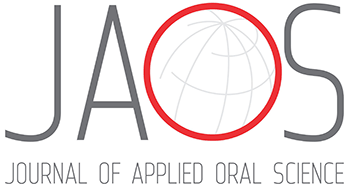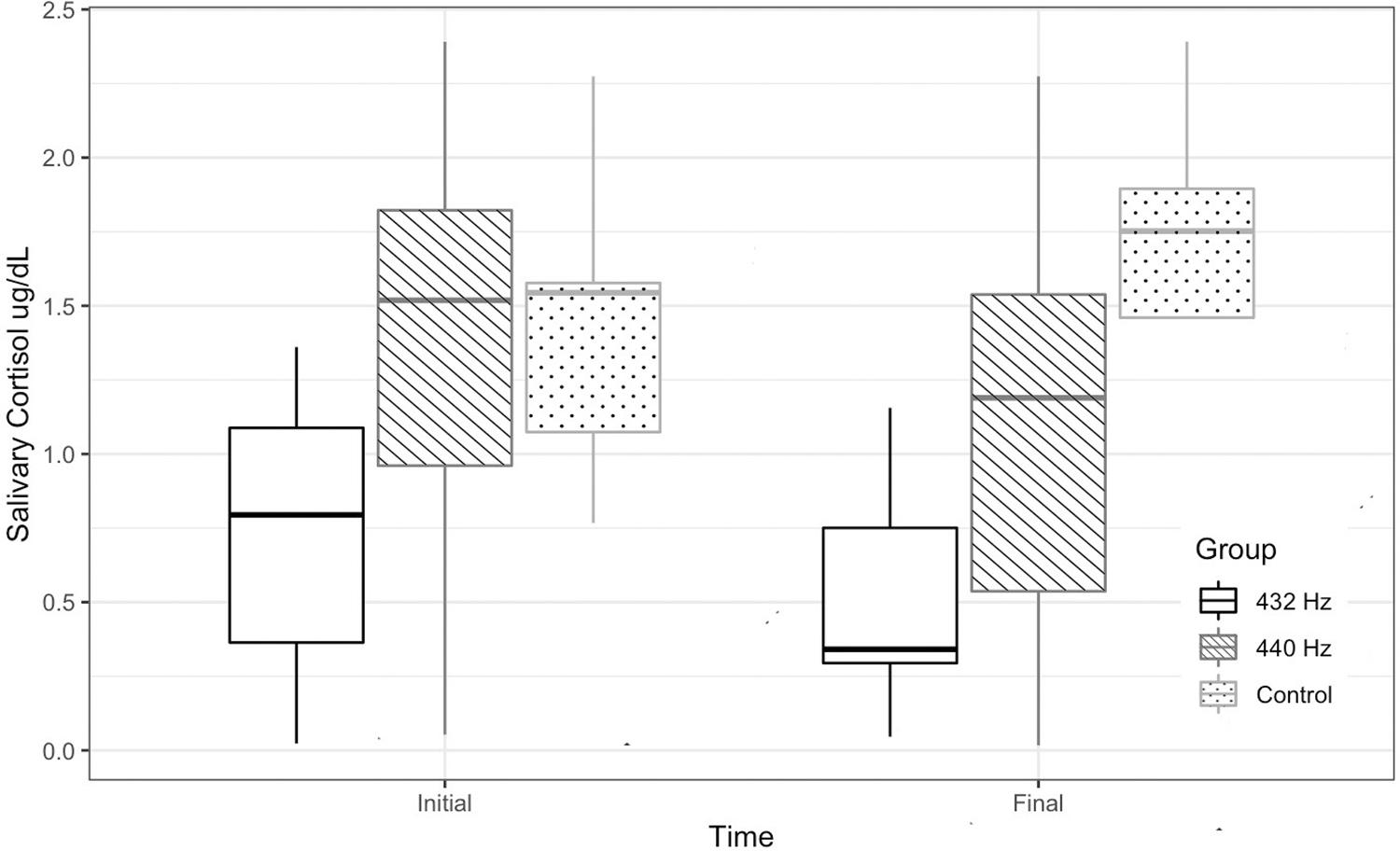Abstract
Objective
The aim of this study was to compare the effects of music at 432 Hz, 440 Hz, and no music on the clinical perception of anxiety and salivary cortisol levels in patients undergoing tooth extraction.
Methodology
A parallel-group randomized clinical trial was conducted. Forty-two patients (average age: 23.8±7.8 years, 27 women) with a moderate level of anxiety were distributed in three groups: use of music for 15 minutes at a frequency of 432 Hz (n=15), at 440 Hz (n=15) and a control group without music (n=12). The CORAH Dental Anxiety Scale and salivary cortisol levels, estimated by the solid phase enzyme-linked immunosorbent assay (ELISA), were measured and compared before and after the music intervention between groups (two-way ANOVA-Tukey p<0.05, RStudio).
Results
Significantly lower anxiety level values were observed at 432 Hz (8.7±2.67) and 440 Hz (8.4±2.84) compared to the control group (17.2±4.60; p<0.05). The salivary cortisol level at 432 Hz (0.49±0.37 μg/dL) was significantly lower than 440 Hz (1.35±0.69 μg/dL) and the control group (1.59±0.7 μg/dL; p<0.05).
Conclusion
The use of music significantly decreased clinical anxiety levels, and the frequency of 432 Hz was effective in decreasing salivary cortisol levels before tooth extraction.
Music therapy; Dental anxiety; Hydrocortisone; Oral surgery; Clinical trial



